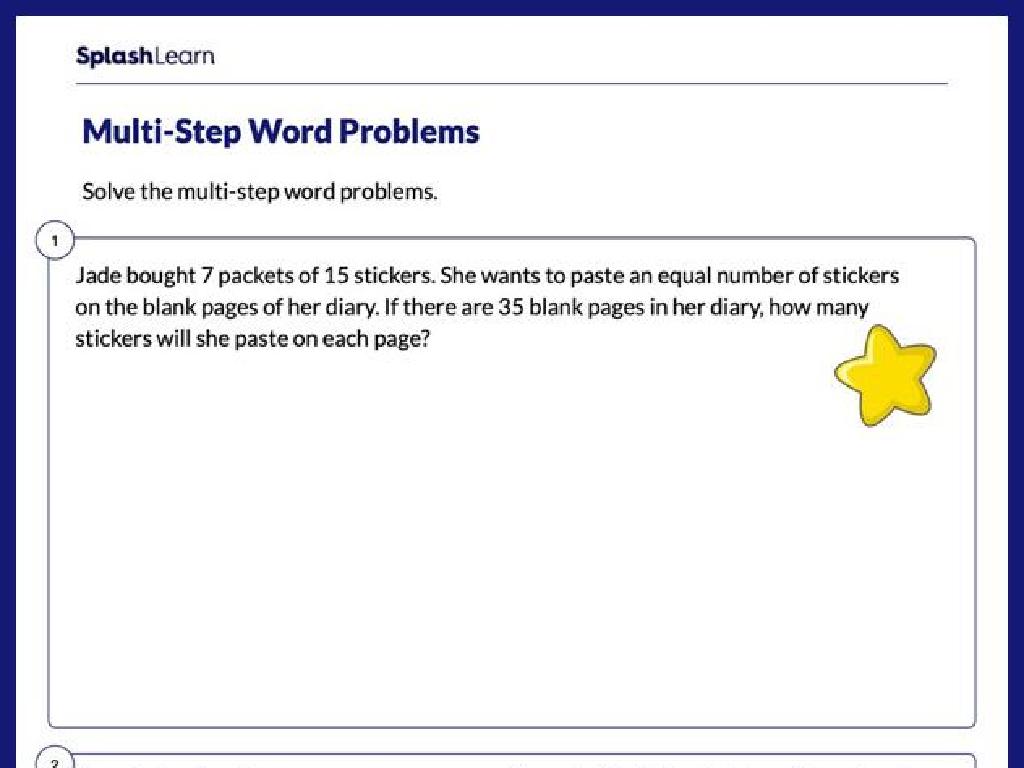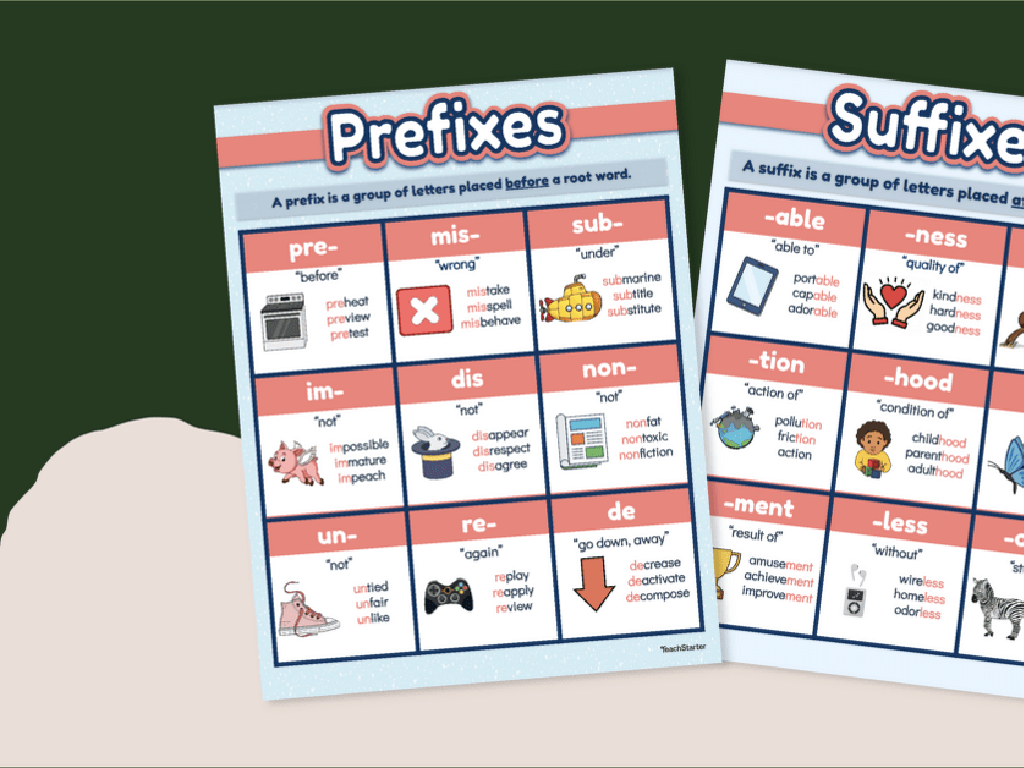Identify Laboratory Tools
Subject: Science
Grade: Eighth grade
Topic: Science Practices And Tools
Please LOG IN to download the presentation. Access is available to registered users only.
View More Content
Welcome to the Science Lab!
– Introduction to lab practices
– Role of laboratory tools
– Tools like beakers and microscopes are essential for experiments.
– Emphasizing lab safety
– Safety ensures everyone’s well-being during experiments.
– Basic safety rules to follow
– No running, always wear safety goggles, and handle chemicals with care.
|
This slide is designed to introduce students to the fundamental aspects of working in a science laboratory. Begin by discussing the standard practices that scientists follow in a lab setting. Emphasize the importance of laboratory tools and how they are integral to conducting experiments and obtaining accurate results. Highlight the critical nature of lab safety, stressing that it is everyone’s responsibility. Go over basic safety rules such as walking carefully in the lab, wearing protective gear, and proper handling of equipment and chemicals. This will set the groundwork for a safe and effective learning environment where students can explore and conduct experiments with confidence.
Identifying Laboratory Measuring Tools
– Rulers and measuring tapes for length
– Essential for measuring the length or distance of objects in experiments.
– Graduated cylinders for volume
– Used to accurately measure liquid volumes; crucial for chemical reactions.
– Balance scales for mass
– Determine the mass of various substances; key in mass-related experiments.
|
This slide introduces students to common laboratory measuring tools and their specific uses. Rulers and measuring tapes are basic tools for measuring the length or distance of objects, which is fundamental in many scientific experiments. Graduated cylinders are designed to measure the volume of liquids accurately, which is crucial when preparing solutions or conducting chemical reactions. Balance scales are used to measure the mass of substances, an essential step in experiments involving mass. Ensure students understand the importance of precision in measurement and how to properly use each tool. Provide examples of experiments where each tool would be necessary.
Heating and Handling Tools in the Lab
– Bunsen burners for heating
– Used to heat substances in controlled manner
– Tongs and spatulas for safety
– Essential for holding hot equipment or chemicals
– Proper use of burners
– Handling materials with care
– Always use tongs or spatulas to prevent accidents
|
This slide introduces students to essential laboratory tools for heating and handling materials. Bunsen burners are a primary heat source in the lab, allowing precise control of flame size and temperature. Emphasize the importance of safety when using burners, including proper lighting techniques and adjusting the flame. Tongs and spatulas are crucial for handling hot glassware or chemicals to avoid burns and spills. Demonstrate the correct way to use these tools and remind students to always be cautious and attentive when working with lab equipment. Discuss the materials these tools are made from, such as metal that can withstand high temperatures. Encourage students to ask questions about each tool’s specific use.
Magnification Tools in the Lab
– Microscopes for tiny organisms
– Observe cells or microorganisms not visible to the naked eye.
– Hand lenses for closer inspection
– Magnify objects to examine details more clearly.
|
This slide introduces students to the essential magnification tools used in a laboratory setting. Microscopes are pivotal for viewing objects that are too small to be seen with the naked eye, such as bacteria, viruses, and cell structures. Hand lenses, or magnifying glasses, are simpler tools that can be used to enlarge the appearance of small objects, making them easier to inspect visually. Encourage students to think about the importance of these tools in scientific discovery and how they have contributed to our understanding of the microscopic world. Discuss the different types of microscopes, like compound and electron microscopes, and their specific uses in science.
Identifying Laboratory Tools: Data Collection
– Stopwatches for time measurement
– Used to measure duration of experiments
– Thermometers for temperature
– Essential for monitoring heat in reactions
– pH meters for acidity/alkalinity
– Determine pH value of substances
– Importance of accurate data
|
This slide introduces students to common laboratory tools used for data collection in scientific experiments. Stopwatches are crucial for timing reactions or events accurately. Thermometers are used to measure the temperature of various substances, which is vital in experiments where temperature can affect the outcome. pH meters are used to determine the acidity or alkalinity of a solution, which can influence the behavior of the substances being tested. Emphasize the importance of accurate data collection in the scientific process and how these tools contribute to reliable results. Encourage students to think about why precision is important in science and how these tools help achieve that precision.
Using Laboratory Tools Effectively
– Demonstrating microscope usage
– Steps for proper handling and observation
– Measuring liquids accurately
– Reading meniscus level for precise volume
– Discussing accuracy in experiments
– Accurate measurements lead to reliable results
|
This slide aims to educate students on the correct usage of essential laboratory tools, focusing on microscopes and graduated cylinders. Begin with a live or video demonstration of how to use a microscope, including adjusting the focus and placing the slide. Emphasize the importance of careful handling to avoid damage. For measuring liquids, show how to read the meniscus at eye level for accuracy. Engage the class in a discussion on why precision is crucial in scientific experiments, highlighting that even small errors can significantly affect outcomes. Encourage students to consider how accuracy impacts the validity of their results and the importance of replicating studies. Provide examples of historical experiments where accuracy was pivotal.
Lab Tools Scavenger Hunt Activity
– Identify lab tools around the classroom
– Measure objects’ length, volume, mass
– Use rulers for length, graduated cylinders for volume, and scales for mass
– Record your findings accurately
– Follow all safety procedures
– Wear safety goggles, handle glassware with care
|
This class activity is designed to familiarize students with the laboratory tools available in the classroom. Students will engage in a scavenger hunt to find and identify various lab tools. They will then use these tools to measure and record the lengths, volumes, and masses of different objects provided by the teacher. Emphasize the importance of accuracy in recording measurements. Safety is paramount, so ensure students understand and practice proper safety procedures, including wearing goggles and handling equipment carefully. Possible activities include measuring the length of a pencil, the volume of water in a beaker, and the mass of a set of washers. This hands-on experience will help reinforce their understanding of lab tools and their uses.
Conclusion: Laboratory Tools & Safety
– Recap of lab tools and uses
– Emphasize precision and safety
– Accurate measurements are crucial for experiments
– Homework: Lab tool’s role in discovery
– Choose a tool, describe its function and its impact on science
– Always follow lab safety rules
– Safety ensures everyone’s well-being and accurate results
|
As we conclude, remind students of the various laboratory tools they’ve learned about and their specific uses. Stress the importance of precision in using these tools for accurate scientific results. For homework, students will write a paragraph on how a particular lab tool has contributed to a scientific discovery, which will help them understand the practical applications of these tools. Lastly, reiterate the necessity of following safety protocols to maintain a safe learning environment and ensure the integrity of experimental outcomes. This reinforces responsible conduct in the lab and the significance of each tool in the broader context of scientific exploration.






